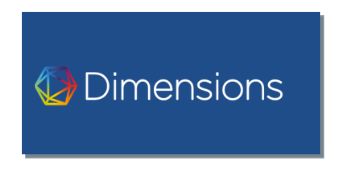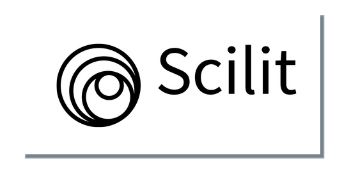Diagnosis and Management of Hypertensive Crisis
DOI:
https://doi.org/10.11594/jk-risk.03.1.6Keywords:
hypertension mediated organ damage, hypertensive urgency, hypertensive emergencyAbstract
Hypertensive crises are divided into emergency and urgent hypertension. For most doctors, the differences between these two types of hypertensive crisis present their own challenges, especially in terms of therapy and follow-up. The main distinguishing feature of these two types of hypertensive crisis is the presence of ongoing acute target organ damage, not the degree of blood pressure (BP). A hypertensive emergency is a true medical emergency, which generally requires immediate lowering of BP, in an intensive care unit and short-term, easily titrated intravenous antihypertensive drug therapy. Common management strategies are based on hypertension-specific organ damage (HMOD); the onset of HMOD, especially time-sensitive ones such as acute ischemic stroke, acute ST-elevation myocardial infarction; and availability of facilities and resources. A hypertensive emergency is a state of severe or significant increase in BP but without acute damage to target organs. This type of hypertension does not require rapid lowering of BP, and can be treated on an outpatient basis with appropriate oral medications.
Downloads
References
Elliott WJ, Rehman SU, Vidt DG. 2013. Hyper-tensive Emergencies and Urgencies. In: Hyper-tension: A Companion to Braunwald's Heart Disease. Black HR, Elliott WJ (eds), 2 ed, Else-vierSaunders, Philadelphia: 390-395.
Balahura AM, Moroi SL,Scafa-Udri A, et al. The Management of Hypertensive Emergencies—Is There a “Magical” Prescription for All? J. Clin. Med. 2022, 11, 3138.
Papadopoulos DP, Mourouzis I, Thomopou-los C, et al. Hypertension crisis.Blood Press. 2010; 19:328-336.
Balahura AM, Mihailescu AM, Weias EA, et al. Hypertensive Crises At the Emergency Room—Who Are the Patients? A Tertiary Center Expe-rience. J. Hypertens. 2019, 37, e75.
Siddiqi TJ, Usman MS, Rashid AM, et al. Clinical Outcomes in Hypertensive Emergency. J Am Heart Assoc. 2023;12: e029355.
Miller J, McNaughton C, Joyce, et al. Hyperten-sion Management in Emergency Departments. Am. J. Hypertens.2020, 33, 927–934.
DeFelice A, Willard J, Lawrence J, et al. The risks associated with short-term placebo controlled antihypertensive clinical trials: a descriptive meta-analysis. J Hum Hypertens. 2008;22:659-668.
Cantone M, Lanza G, Puglisi V, et al. Hyperten-sive Crisis in Acute Cerebrovascular Diseases Presenting at the Emergency Department: A Narrative Review. Brain Sci. 2021, 11,70.
Börgel J, Springer S, Ghafoor J, et al. Unrecog-nized secondary causes of hypertension in pa-tients with hypertensive urgency/emergency: prevalence and co-prevalence. Clin Res Cardiol. 2010; 99:499-506.
Vidt DG. Emergency room management of hy-pertensive urgencies and emergencies. J Clin Hypertens. 2001; 3:158-164.
Shavit L, Reinus C, Slotkl I. Severe renal failure and microangiopathic hemolysis induced by malignant hypertension—case series and re-view of literature. Clin Nephrol. 2010; 73:147-152.
Kotruchin P, Tangpaisarn T, Mitsungnern T, et al. Hypertensive emergencies in Asia: A brief review. J Clin Hypertens. 2022; 24:1226–1235.
Shantsila A, Shantsila E, Lip GY. Malignant hy-pertension: a rare problem or is it underdiag-nosed? Curr Vasc Pharmacol. 2010; 8:775-779.
van den Born, BJH; Lip GYH, Brguljan-Hitij J et al. ESC Council on hypertension position docu-ment on the management of hypertensive emergencies. Eur. Hear. J. Cardiovasc. Pharm. 2019, 5, 37–46.
Immink RV, Van Den Born BJH, Van Montfrans GA et al. Cerebral hemodynamics during treat-ment with sodium nitroprusside versus labetalol in malignant hypertension. Hyperten-sion 2008, 52, 236–240.
Hiratzka LF, Bakris GL, Beckman JA, et al. 2010. ACCF/AHA/AATS/ACR/ASA/SCA/SCAI/SIR/STS/SVM guidelines for the diagnosis and man-agement of patients with thoracic aortic disease: Circulation. 2010;121: e266-e369.
Vaughan C, Delanty N. Hypertensive emergen-cies. Lancet. 2000; 356:411-417.
Williams B, Mancia G, Spiering W et al. 2018 ESC/ESH Guidelines for the management of ar-terial hypertension. J. Hypertens. 2018, 36, 1953–2041.
Powers WJ, Rabinstein AA, Ackerson T et al. Guidelines for the early management of pa-tients with acute ischemic stroke: 2019 update to the 2018 guidelines for the early manage-ment of acute ischemic stroke a guideline for healthcare professionals from the American Heart Association/American Stroke A. Stroke 2019, 50, 344–418.
Jauch EC, Cucchiara B, Adeoye O, et al. Part 11: adult stroke: 2010 American Heart Association Guidelines for Cardiopulmonary Resuscitation and Emergency Cardiovascular Care. Circula-tion. 2010;122: S818-S828.
Sandset EC, Anderson CS, Bath PM, et al. Euro-pean Stroke Organisation (ESO) guidelines on blood pressure management in acute ischaemic stroke and intracerebral haemorrhage. Eur. Stroke J. 2021, 6, XLVIII–LXXXIX.
Awaludin A, Rahayu C, Daud NAA, et al. Anti-hypertensive Medications for Severe Hyperten-sion in Pregnancy: A Systematic Review and Meta-Analysis. Healthcare 2022, 10, 325.
Downloads
Published
Issue
Section
License
Authors who publish with this journal agree to the following terms:
- Authors retain copyright and grant the journal the right of first publication with the work simultaneously licensed under a Creative Commons Attribution License that allows others to share the work with an acknowledgement of the work's authorship and initial publication in this journal.
- Authors can enter into separate, additional contractual arrangements for the non-exclusive distribution of the journal's published version of the work (e.g., post it to an institutional repository or publish it in a book), with an acknowledgement of its initial publication in this journal.
- Authors are permitted and encouraged to post their work online (e.g., in institutional repositories or on their website) before and during the submission process, as it can lead to productive exchanges and earlier and greater citation of published work (See The Effect of Open Access).

















